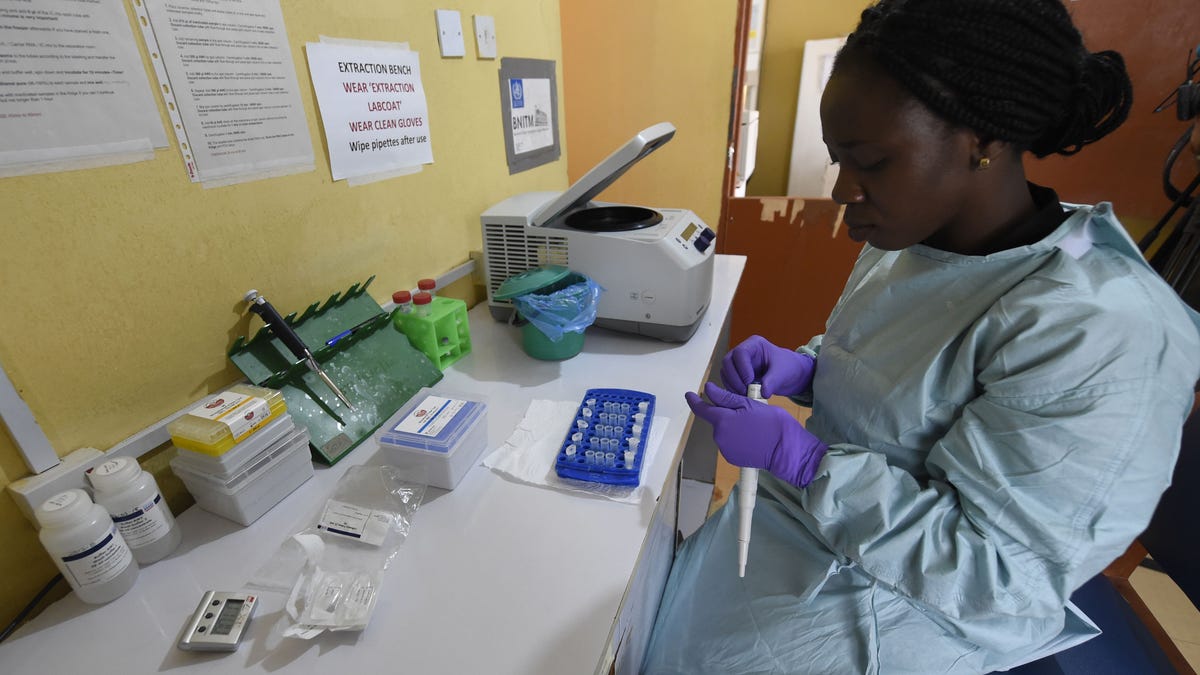Iowa Resident Dies from Lassa Fever: CDC Warns Public
CDC Issues Warning After Iowa Death Linked to Lassa Fever
In recent news, a tragic incident has put the spotlight on Lassa fever, a disease that, while often overshadowed by other illnesses, poses serious health concerns. An Iowa resident has died from this viral hemorrhagic fever, prompting public health officials, including the CDC, to issue a warning. This situation raises critical questions about Lassa fever, its transmission, and measures we can take to protect ourselves. So, let’s dig deeper into this recent story and explore what it all means.
Understanding Lassa Fever
Lassa Fever is not your average viral infection. Named after the town in Nigeria where it was first identified in 1969, this disease is caused by the Lassa virus, which is primarily carried by a rodent known as the multimammate rat. While it is endemic in West Africa, cases have been reported in other regions, and the recent incident in Iowa demonstrates that it’s a threat that can potentially reach beyond its typical borders.
How Does Lassa Fever Spread?
Imagine for a moment you’re at home, cozy and warm, when suddenly your pet rat decides to go on an adventure, scurrying into areas you might not expect. Like that, the Lassa virus spreads through direct contact with the urine, droppings, or saliva of infected rodents. Additionally, humans can become infected through:
- Direct contact with the bodily fluids of an infected person.
- Consumption of food contaminated by infected rodent droppings.
- Inhalation of aerosolized virus particles in poorly ventilated areas, particularly in rural or impoverished settings.
This virus is primarily an occupational hazard for those working closely with infected animals or in healthcare settings where safety measures might be lacking. But the important takeaway is that it’s not as contagious as other viruses, like influenza or COVID-19, which can make it easy to underestimate its potential impact.
Symptoms of Lassa Fever
So, what exactly happens when someone contracts Lassa fever? The symptoms usually appear 6 to 21 days after exposure and can start off mild and flu-like, which might disguise the seriousness of the disease. Here’s a quick rundown of common symptoms:
- Fever
- Weakness and fatigue
- Headaches
- Muscle aches
- Vomiting or diarrhea
- Chest pain and abdominal discomfort
In more severe cases, you might see bleeding from the mouth, nose, gums, and even the eyes. Yikes! This progression can lead to shock, multi-organ failure, and, unfortunately, death. The case fatality rate for Lassa fever ranges from one to 15 percent, but in some outbreaks, it can be much higher.
The Iowa Case
The recent Iowa case has underscored the importance of awareness surrounding Lassa fever. The individual, whose identity has not been disclosed, had traveled to a region with known Lassa virus transmission. It’s a stark reminder that infectious diseases don’t recognize borders. The CDC has urged the public to remain vigilant, especially those with recent travel to regions where the virus is endemic.
What Are the Authorities Saying?
In response to this tragical event, health officials have emphasized the necessity of education and appropriate measures for people who might be at risk. The CDC states that while the general public is at low risk of infection, certain segments need to be aware:
- Travelers: Individuals heading to West Africa should be informed of the risks and should take preventative measures.
- Healthcare Workers: Those working in high-risk environments need sufficient protective equipment and training to handle potential exposure.
- Community Awareness: The public should familiarize themselves with the signs and symptoms of Lassa fever.
Preventing Lassa Fever
Prevention is often better than cure, right? So, let’s look at some crucial steps everyone can take to minimize the risks associated with Lassa fever.
Effective Measures
-
Maintain Clean Environments: Keep homes and public areas clean to deter rodent populations. This includes sealing cracks and holes where rodents can enter, and proper food storage to avoid attracting them.
-
Practice Good Hygiene: Regular handwashing with soap and water can help limit exposure to harmful viruses and bacteria.
-
Be Cautious Abroad: If you’re traveling to areas where Lassa fever is common, avoid contact with rodents and do not handle sick individuals or their bodily fluids.
- Seek Knowledge: Stay informed about travel advisories and health alerts related to diseases prevalent in your destination country.
Vaccination Efforts
Currently, there is no widely available vaccine for Lassa fever, but research is ongoing. Scientists are exploring potential vaccines that could become available in the future, which is a ray of hope for those at risk.
Conclusion
The recent death in Iowa serves as a critical reminder that Lassa fever is not just an obscure disease confined to certain regions. It’s a global health concern that requires awareness, education, and preventive measures to ensure everyone’s safety. By understanding how it spreads, recognizing its symptoms, and taking the necessary precautions, we can protect ourselves and our communities.
In a way, combating threats like Lassa fever is much like preparing for a storm. While we can’t always predict when or where it will hit, we can certainly equip ourselves with the knowledge and tools to weather the storm.
FAQs
1. What is Lassa fever?
Lassa fever is a viral hemorrhagic illness caused by the Lassa virus, mainly transmitted through contact with infected rodents or human bodily fluids.
2. How can Lassa fever be transmitted?
It spreads through direct contact with infected rodents, contaminated food, or the bodily fluids of infected individuals.
3. What are the symptoms of Lassa fever?
Symptoms include fever, fatigue, headaches, vomiting, and in severe cases, bleeding from orifices.
4. Is there a vaccine for Lassa fever?
Currently, there is no widely available vaccine, but research is ongoing to develop one.
5. What should I do if I think I have Lassa fever?
Seek immediate medical attention, especially if you’ve traveled to endemic areas or been in contact with someone who may have the virus.







